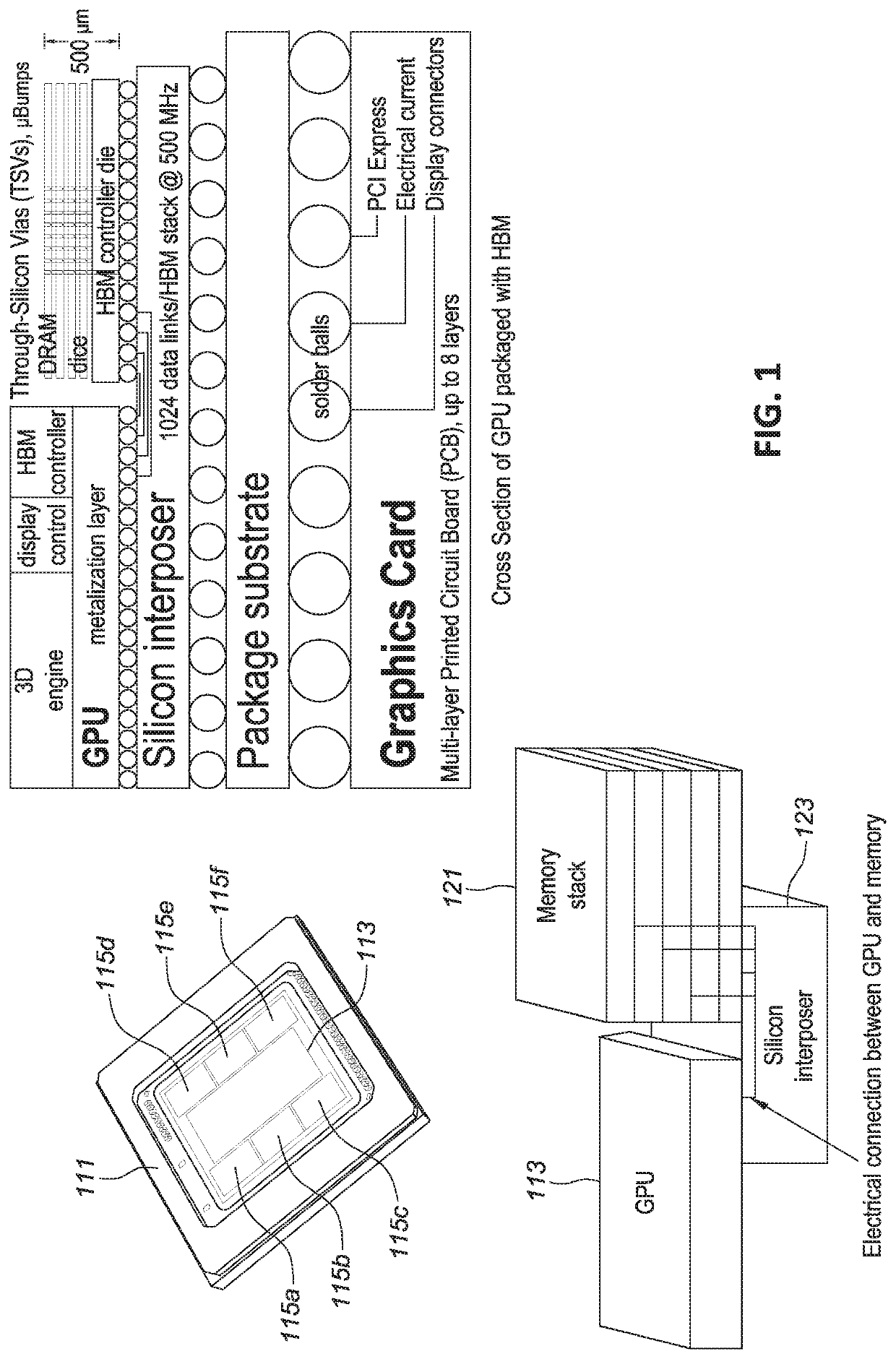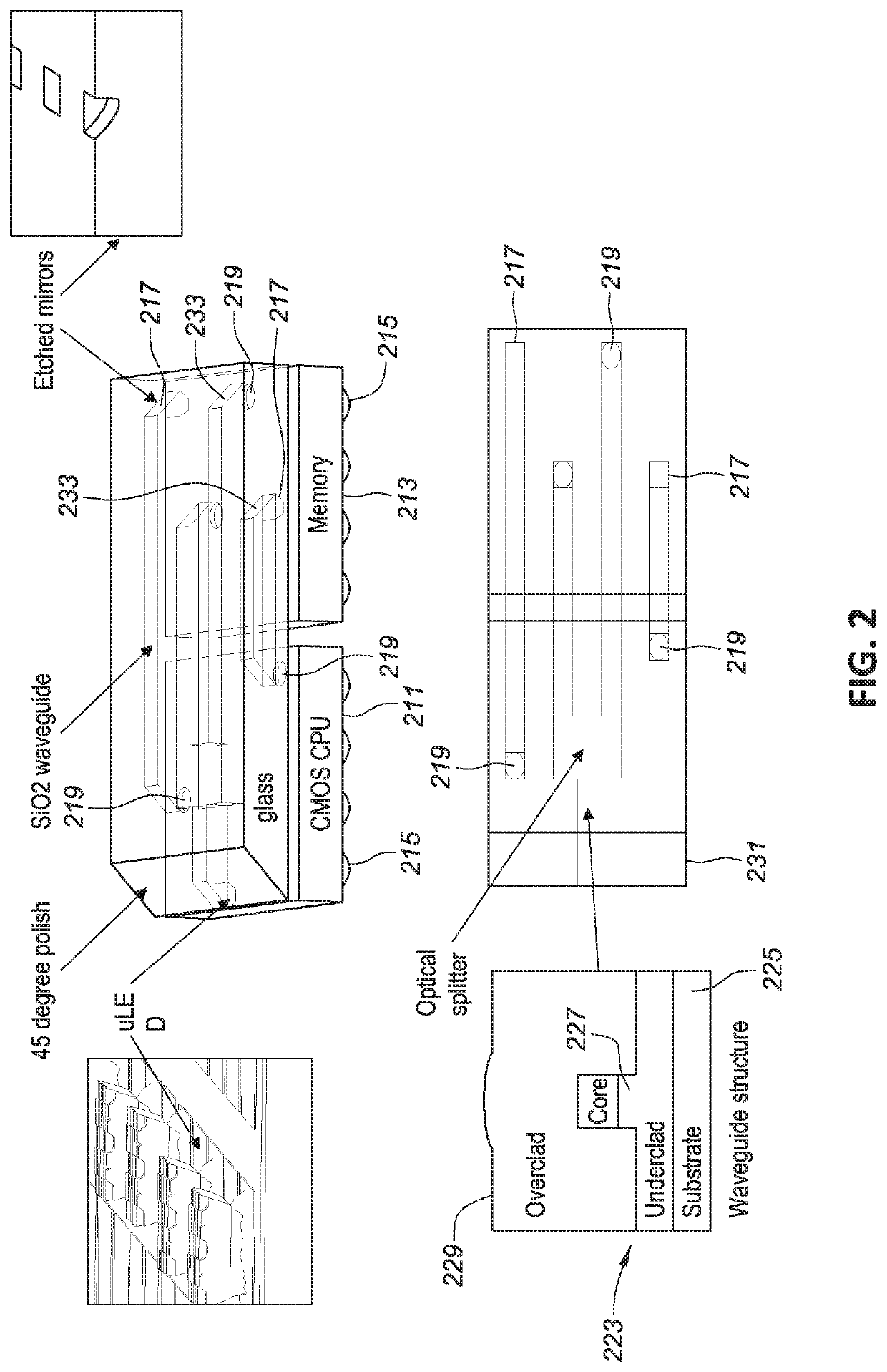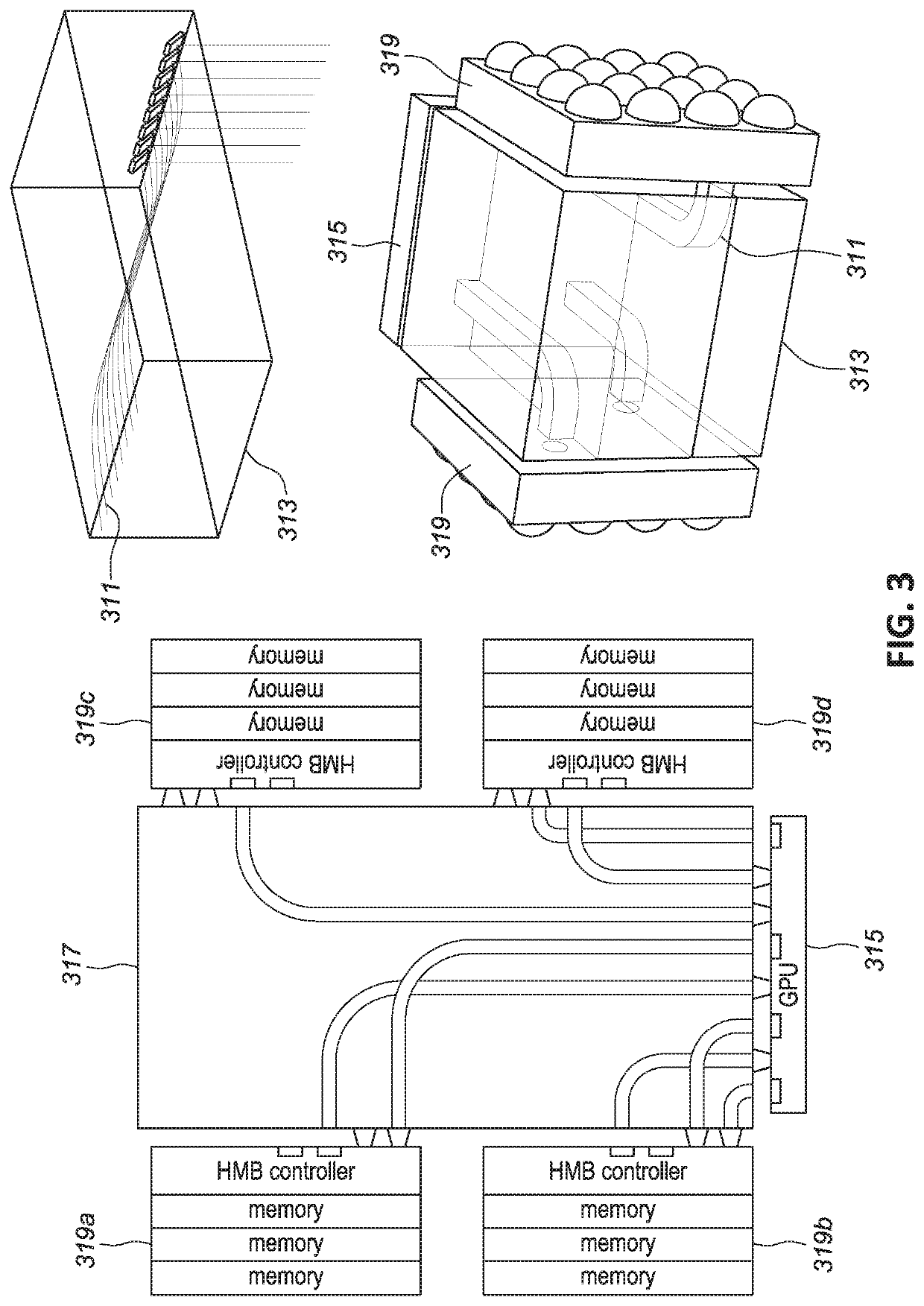Chip-scale optical interconnect using microleds
an optical interconnect and micro-led technology, applied in the direction of electrical equipment, semiconductor devices, instruments, etc., can solve the problems of consuming a large amount of electrical power, consuming a large amount of power, and consuming electrical power, and achieve the effect of low power and low cos
- Summary
- Abstract
- Description
- Claims
- Application Information
AI Technical Summary
Benefits of technology
Problems solved by technology
Method used
Image
Examples
Embodiment Construction
[0034]Embodiments in accordance with this invention use LEDs, microLEDs in various embodiments, for inter-chip communication, with in some embodiments the chips in communication being within a common package or on a common package substrate. Some embodiments use an array of microLEDs, such as blue LEDs on the order of 2 um×2 um each. In some embodiments a microLED is distinguished from a semiconductor laser (SL) as follows: (1) a microLED does not have an optical resonator structure; (2) the optical output from a microLED is almost completely spontaneous emission, whereas the output from a SL is dominantly stimulated emission; (3) the optical output from a microLED is temporally and spatially incoherent, whereas the output from a SL has significant temporal and spatial coherence; (4) a microLED is designed to be driven down to a zero minimum current, whereas a SL is designed to be driven down to a minimum threshold current, which is typically at least 1 mA. In some embodiments a mic...
PUM
| Property | Measurement | Unit |
|---|---|---|
| length | aaaaa | aaaaa |
| threshold current | aaaaa | aaaaa |
| sizes | aaaaa | aaaaa |
Abstract
Description
Claims
Application Information
 Login to View More
Login to View More - R&D
- Intellectual Property
- Life Sciences
- Materials
- Tech Scout
- Unparalleled Data Quality
- Higher Quality Content
- 60% Fewer Hallucinations
Browse by: Latest US Patents, China's latest patents, Technical Efficacy Thesaurus, Application Domain, Technology Topic, Popular Technical Reports.
© 2025 PatSnap. All rights reserved.Legal|Privacy policy|Modern Slavery Act Transparency Statement|Sitemap|About US| Contact US: help@patsnap.com



